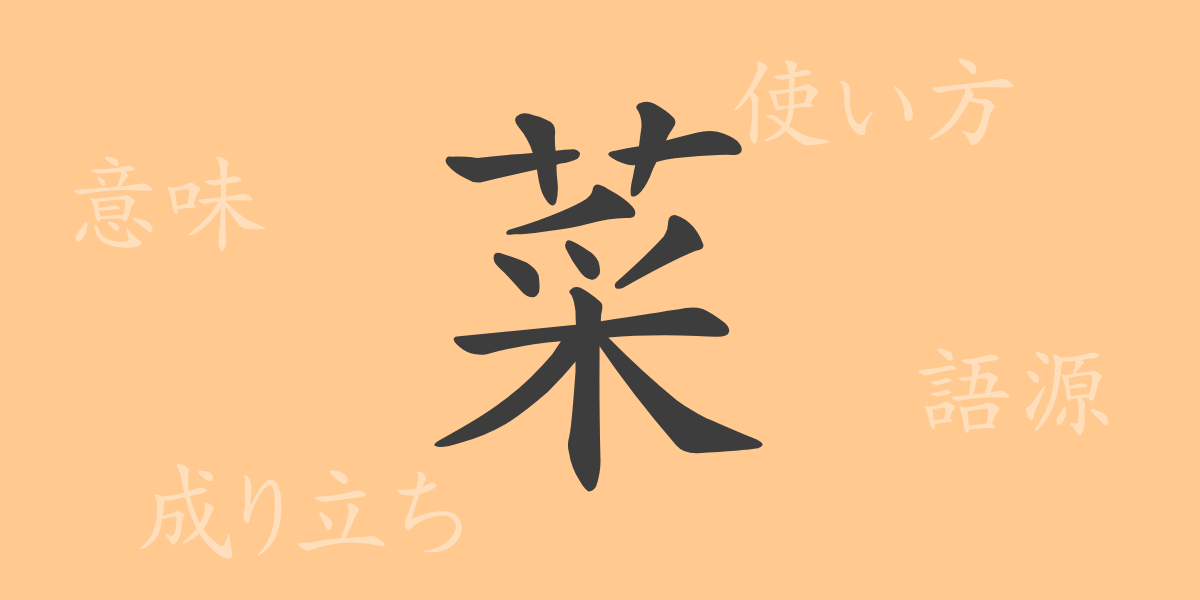In Japanese culture, kanji are more than just characters. Each kanji holds its own history, meaning, and beauty. This article focuses on “菜” (sai), a common-use kanji, exploring its origins and everyday usage. From the vegetables that color our tables to the idioms that enrich our language, we invite you into the world of “菜” (sai).
Etymology of 菜 (sai)
The kanji “菜” (sai) has its origins in ancient China. Its components are “艸” (kusakanmuri, meaning grass) and “采” (irodori, meaning to pick or gather). The “艸” radical is commonly found in kanji related to plants, while “采” historically referred to picking colors from plants, and by extension, harvesting them. Together, these elements form “菜” (sai), which came to mean picking plants, specifically referring to edible vegetables.
Meanings and Usages of 菜 (sai)
The kanji “菜” (sai) primarily refers to edible vegetables but can broadly indicate plants and flowers. In culinary contexts, it is used to distinguish types of vegetables such as “青菜” (aona, leafy greens), “根菜” (konsai, root vegetables), and “葉菜” (hasai, leafy vegetables). It also appears in dish names like “菜の花” (nanohana), a spring vegetable. Metaphorically, “人の菜” (hito no na) can refer to human resources.
Reading, Stroke Count, and Radical of 菜 (sai)
The kanji “菜” (sai) has several readings and a specific structure:
- Reading: In the on’yomi reading, it is “サイ” (sai), and in the kun’yomi reading, it is “な” (na).
- Stroke count: “菜” (sai) has 11 strokes.
- Radical: The radical is “艸” (kusakanmuri, meaning grass).
In Japanese education, it is taught as one of the common-use kanji in elementary school, known for its simple yet memorable form.
Idioms, Phrases, and Proverbs Using 菜 (sai) and Their Meanings
There are many idioms and phrases in Japanese that include “菜” (sai), demonstrating the richness of the language:
- 青菜に塩 (aona ni shio) – Describes a state of dejection, similar to how greens wilt when salted.
- 菜食主義 (saishokushugi) – Refers to vegetarianism, a lifestyle gaining attention for its health and environmental benefits.
- 菜園 (saien) – Refers to a vegetable garden.
- 菜の花のよう (nanohana no yō) – An adjective phrase describing a bright and fresh appearance.
Conclusion on 菜 (sai)
From ancient etymology to modern usage, “菜” (sai) is deeply rooted in our lives. Beyond its basic meaning of referring to vegetables that sustain our diet, it adds richness to our language through various idioms and expressions. As a beloved common-use kanji in Japan, “菜” (sai) continues to be an integral part of our culture, cherished for its simple yet profound significance.

























